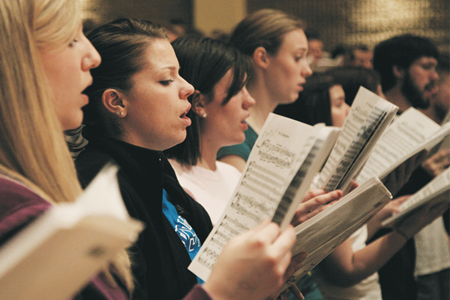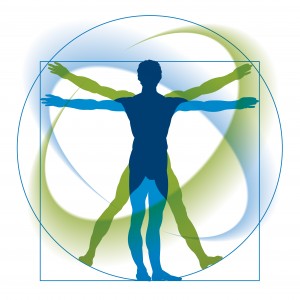Continuing our series on adolescent development, we move ahead to examine the social world of the adolescent, including the world of self, home, and community. Again, we will merely scratch the surface in this installment of “Who Are You? – Understanding the Adolescent.” Of all facets of adolescent development, perhaps the most significant internal development (though most dynamic externally) is in the arena of how adolescents interact socially.
Again, I am simply presenting information that is generally accepted and accessible on your own. If you have further interest, I encourage you to do additional reading.
Social Development:
Social development, as in other areas of development, displays some continuity from childhood; yet, there are also some unique patterns only seen in adolescence. In addition, there are occasional differences between the sexes.
The general pattern among girls:
- Young adolescence (11-13) – Girls have one or more best friends (the clique); inseparable and jealous over them. The loss of this friend is a traumatic event.
- Middle adolescence (13-16) – Girls are a part of a larger group of boys and girls who date, party, and go to the prom together (the cluster/crowd). Close ties with girls lessen because attachments to boys grow stronger.
- Late adolescence (16-18) – Cliques/crowds/clusters are largely dissipated and are replaced by couples as the basic social unit.
The general pattern among boys:
- Young adolescence (11-13) – Boys are similar to girls in developing close friendships and with other boys. They are LESS likely than girls to form tight cliques and are more likely to be part of a larger group of boys who engage in activities together, such as sports, going to the mall, hanging out, etc.
- Middle adolescence (13-16) – Boys are joined in a crowd where there is no pairing of boys and girls but where boys and girls interact as friends.
- Late adolescence (16-18) – Young men leave the group and crowd behind as they get involved in dating.
The World of Self, Home, and Community
There is both continuity and change in the way an adolescent views him/herself, home, school, and the larger community.
Continuity:
- The teenager is the same in personality and interpersonal style as they were in childhood.
- Parents and siblings are still viewed as just that, though affection is shown less openly.
- The teenager carries the same attitudes toward school as were held in childhood. They usually hold the same level of academic achievement.
- The community is still the arena for a large part of the teenager’s social life, though there are occasionally more conflicts.
Changes:
Teenagers develop a reflective sense of self.
- They can survey all facets of him/herself as an integrated whole, and can also begin to put herself in other people’s positions and look at herself from that new perspective.
- Due to the rapid changes in their bodies, feelings, appetites, and intellect, they are often preoccupied with themselves.
- They assume that other people are thinking about the same things they are, namely, themselves.
Teenagers construct an imaginary audience.
- They believe an audience (peers, adults, world) is constantly watching them and appraising their behavior.
- This accounts for the characteristic self-consciousness of the young adolescent.
- We never lose the imaginary audience, but it is most evident in early adolescence.
- The audience can have a negative impact when young people engage in activities to please the audience that they might never undertake on their own.
- Teenagers are concerned with the impression of her family on others.
- As a result, they become hypercritical of parents. (From an inner concern for outward appearance.)
3. Teenagers construct a personal fable
- The thought is: “If everyone is thinking about us, we must be something special and unique.”
- This creates a sense of invulnerability, “other people will grow old and die, but not me. Other people will not attain their ambitions and goals, but I will. Etc.”
- Of course, we are all special and unique, but the personal fable carries this much further.
- Young adolescents are more likely than older adolescents to respond in ways that suggest a strong personal fable.
- The P.F. also stays with us throughout life. (Getting on a roller coaster or airplane.)
- Consider the implications for involvement in sex, drugs, and alcohol. Information/education about these destructive habits is not enough. First hand accounts from teens who thought they were invulnerable, but became pregnant or addicted is most helpful.
4. Teenagers engage in a reconstruction of their memory.
- Children repress and deny parental slights. Adolescents reconstruct to include all and more of these injustices.
- Children believed parents could do no wrong. Adolescents believe they can do no right.
- Sibling controversy is no longer over toys and prerogatives. It is over clothes and possessions.
5. Teenagers increase their involvement and participation in the greater community.
- The center of a child’s activity is home. The center of an adolescent’s activity is social media, mall, restaurant, friend’s house, or movie theater.
- Teenagers do not want to be seen in community with parents (this is seen as child-like; imaginary audience is also at work.)
- There is less harmonious interaction between the adolescent and community.
- Trends show that in some exclusively adolescent places, teens are well-behaved. In adult settings, there tends to be a sense of fear and they become loud and rambunctious.
6. Change in school setting/environment/structure
- Changing classes within the day introduces many new people and friends.
- There is a lot of time spent in the hallways, creating a strong social dynamic.
- New social format gives way to cliques, crowds, clusters, and divisions.
- School is less a place of academic activity and now more of a stage where the drama of adolescence takes place.
The adolescent now views the home, school, and community differently than he/she did as a child. In the same way, however, the home, school, and community also view the adolescent differently than when he/she was a child.
As I consider the above information, it seems to be that there are some unique, but practical “teachable moments” for the students in our ministries:
- Encourage teenagers to be themselves and not worry what other people think. Ultimately, we are to teach to them to be concerned first and foremost with what God thinks.
- Encourage teenagers, especially in rehearsal, to think of the real audience that will come and hear them sing. Ask, “What do you want them to think about how you did?”
- Encourage teenagers to think from the director’s or friend’s perspective.
- Any form of service/ministry project that forces them to see what life is like from another person’s perspective is helpful in combatting the egocentric thinking of most adolescents. Many of us already engage in this type of ministry, but this goes to show us just how important that type of ministry is important in the overall structure of a meaningful, purposeful student choir ministry.
Normal 0 false false false EN-US JA X-NONE
Grace and peace to you as you pastor and mentor students along the unique and difficult social journey of adolescence.









